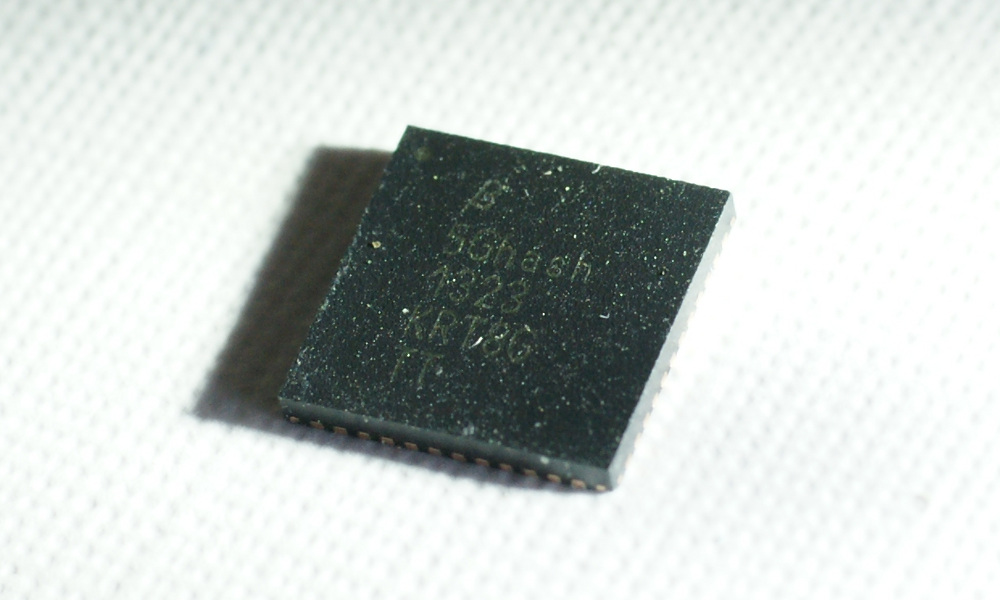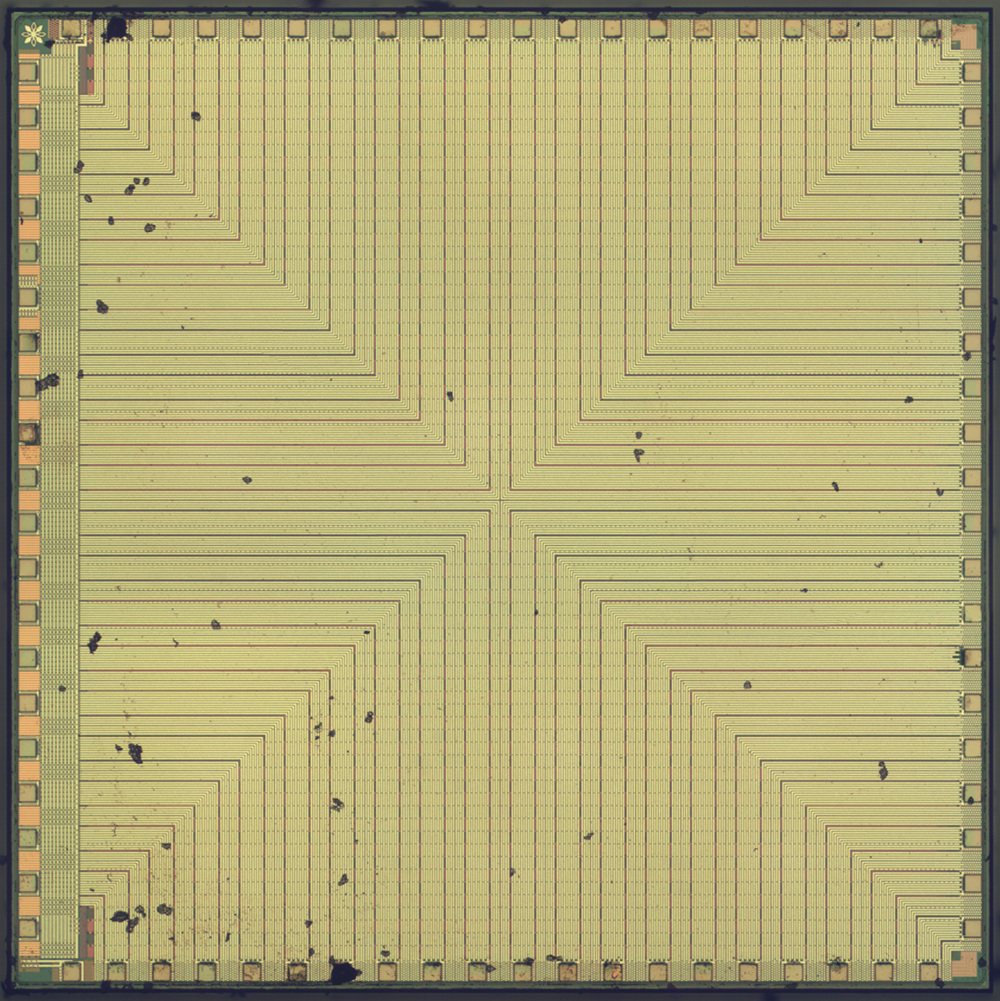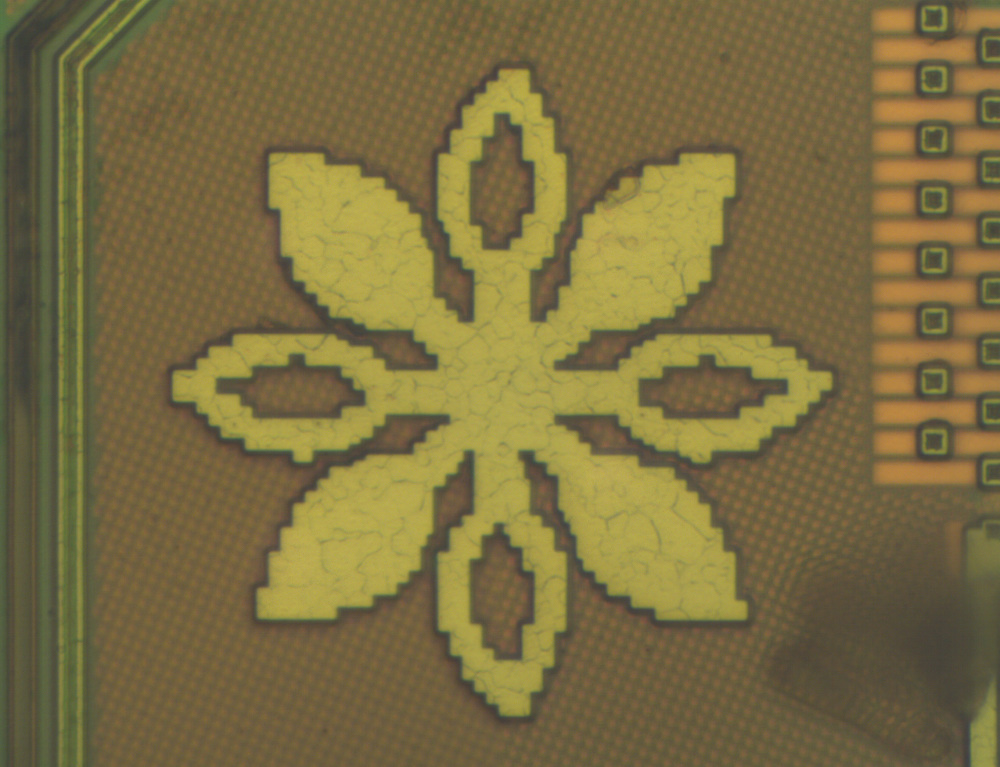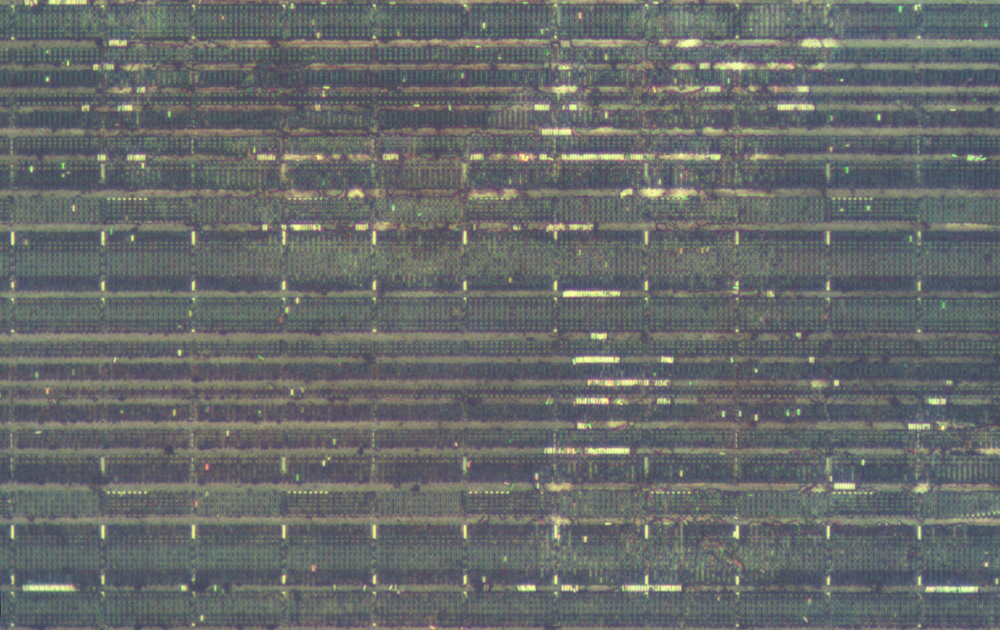Received crystal photos of a specialized Bitcoin processor Bitfury
 More recently, Avalon was the only processor specifically tailored to the calculation of Bitcoin. Over the past time, Butterfly Labs seems to have finally begun to send out something (but they have not yet been able to get a sample of their microcircuit), and much more interestingly, they received engineering crystals of the Bitcoin processor Bitfury.
More recently, Avalon was the only processor specifically tailored to the calculation of Bitcoin. Over the past time, Butterfly Labs seems to have finally begun to send out something (but they have not yet been able to get a sample of their microcircuit), and much more interestingly, they received engineering crystals of the Bitcoin processor Bitfury. Bitfury is radically more efficient (in terms of energy consumption on Mhash) of Avalon and BFL, due to the fact that it is produced using 55nm technology (at the TSMC factory in Taiwan), and the circuit is completely hand-drawn, without using automatic synthesis from standard cells. So, 1 Avalon crystal, as we recall, gives about 282 Mhash / sec, while for Bitfury it turns out to be about 2-3 Ghash / sec for now (the exact numbers will be clear when the chips are put into finished mining devices).
The Bitfury chip is notable for the fact that it was developed by our compatriot from Ukraine. However, he does not reveal his name, so as not to attract too much attention. This was his first development of an integrated circuit - before that, he had not been engaged in FPGA for long. What may surprise many - the crystal was not tested in the shuttle / MPW (test launch of production from several customers at the same time) - this would take a lot of time, although the cost of the error would be less. The project was immediately sent to serial production. Surprisingly, it worked the first time. The final assembly of devices will be organized by the Moscow company Metabank.
Photo
The chip itself, like Avalon, is in the QFN package due to its good heat sink and the short distance from the crystal to the terminals. Do not kick for the photo - the inscriptions are extremely difficult to read, because the lighting is so ... unusual.
We take out the crystal from the case: The

top layer of metal - has a very original grid of power distribution over the chip area: Chipart "Nanoflower": Etch metallization: The regular structure of the crystal, consisting of many similar hash calculation blocks, is clearly visible. 55nm is already at least 5 times smaller than what can be seen with an optical microscope, so that the smallest implementation details will remain hidden from us ....





Summary
Bitfury - the product is real, and the performance of 1 crystal - turned out to be an order of magnitude better than existing competitors. It turned out that with a careful approach to business, you can start the chip from the first try, even if this is the first project. The developer experience can only be envied :-)Also, Bitfury is probably one of the few (if not the only) large-scale microelectronic projects in the former USSR that was launched without state funding, and not in the interests of foreign customers.
We can only wish success in the implementation of this project, and spit three times over the left shoulder to go through customs without additional quests.
